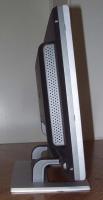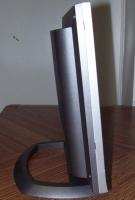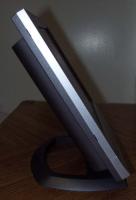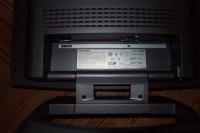Daewoo L700C & L520B: Value Oriented 17'' and 15'' LCD's
by Kristopher Kubicki on November 28, 2002 4:01 AM EST- Posted in
- Displays
Features
As LCD’s go, the L700C and L520B can best be described as “no frills” solutions. More often then not, this is perfect for the consumer with value in mind. For monitors with few features, these Daewoo LCD’s still are able to pack a good punch.
Both of these monitors have enormous capacities to tilt. The 17” L700C was able to tilt 30 degrees backward. Unfortunately even with the weighted base this action still requires two hands. The L520B, on the other hand, tilts much easier.
Not only does the L520B tilt 30 degrees backward, but a small lever allows the monitor to tilt all the way back to 90 degrees. Although there are very few applications for this feature, it is very possible that such a feature is perfect for some solutions. Also, for transportation, the fully tilted position makes the LCD very easy to carry.
We do have to keep in mind the lack of a DVI connection on either of these monitors. Oddly enough, even though almost all video cards on the market today have at least one DVI connection, we only seem to see DVI connections on the highest quality of LCD monitors.
The Importance of Being Digital
Even though we have covered the topic several times, some people are still unsure about the importance of DVI. DVI stands for “Digital Visual Interface,” and its purpose is just that; to provide a digital, rather than analog interface between the monitor and the video card.
The problem with current 15-pin D-Sub analog interface is the loss of quality converting the signal. The video signal at the video card is generated as a digital signal. In order for monitors to process this information, it is broken down into an analog signal and then sent over the 15-pin analog cable. LCD monitors then take this analog signal, and convert it back to digital, where it is used to generate the display.
This double conversion takes a lossless digital signal and allows the analog cable to degrade the quality of the signal. When the signal is converted back to digital, the imperfections in the signal become very apparent, and sometimes amplified.
Intel, IBM, HP, and several other hardware manufacturers came together to solve this problem with the DVI standard. Most DVI connections available on computers are DVI-I, which means the interface is capable of analog or digital signal. The superior quality on the digital signal eliminates the ghosting and streaking normally associated with an analog cable.
















0 Comments
View All Comments